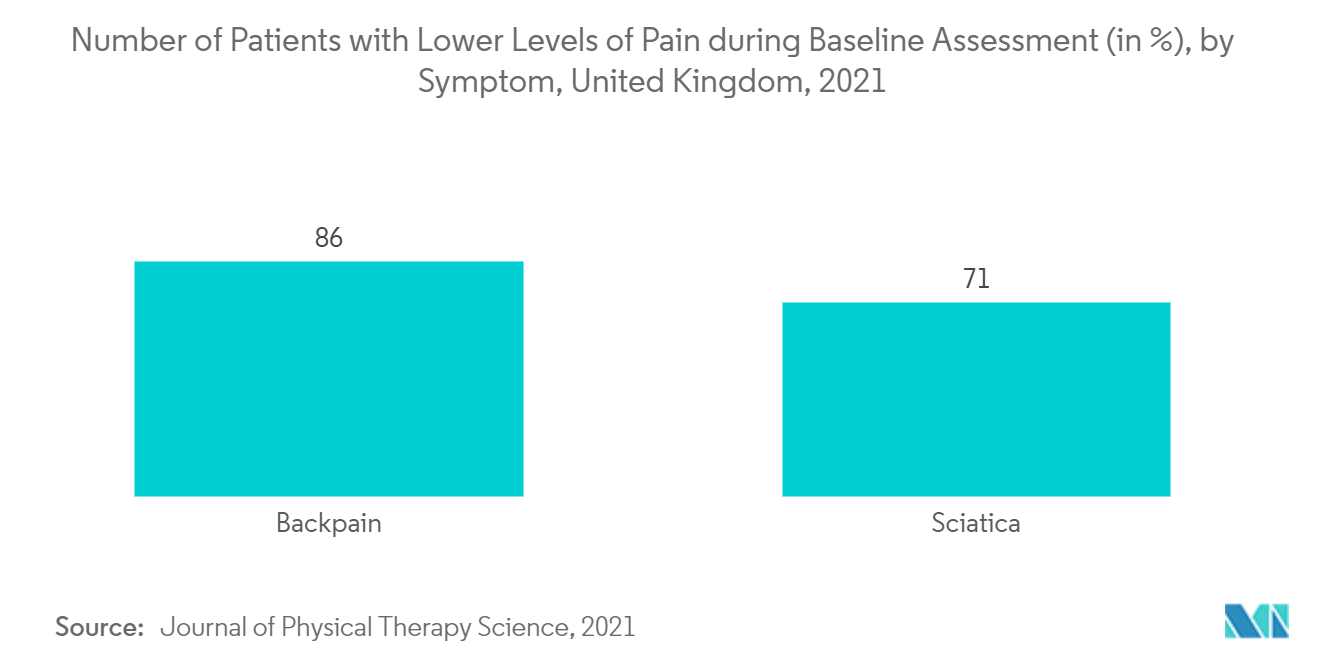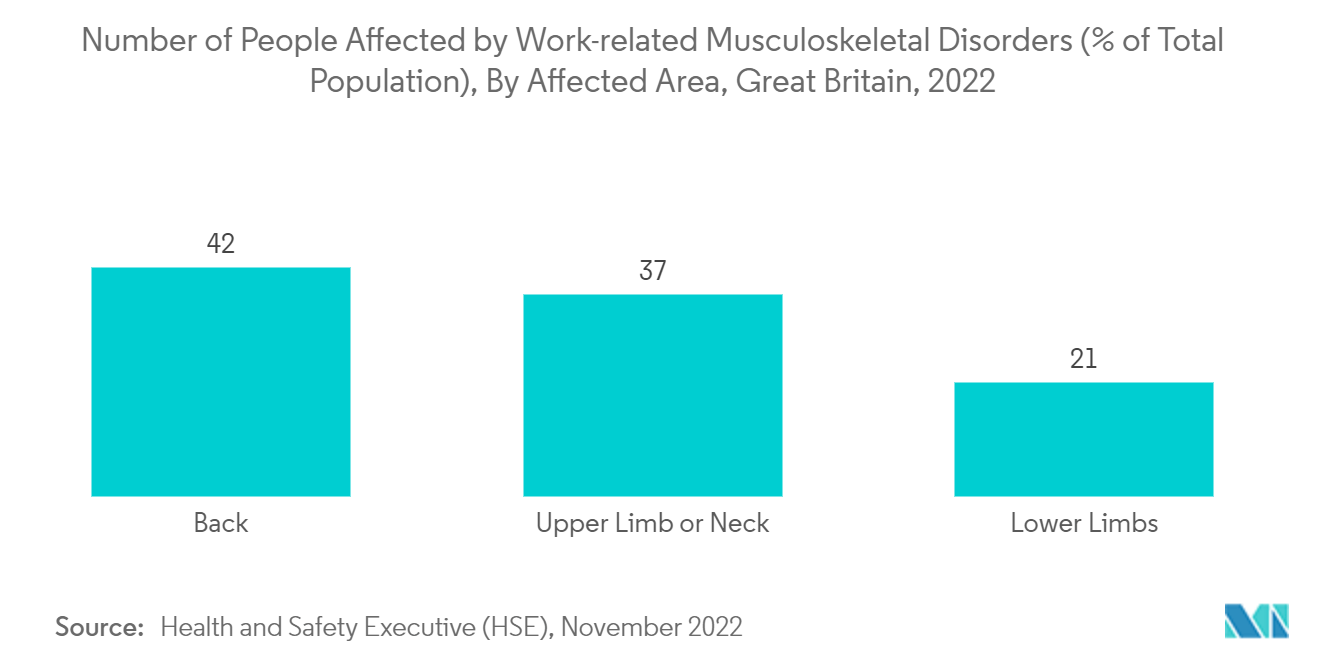Market Trends of United Kingdom Spinal Surgery Devices Industry
This section covers the major market trends shaping the UK Spinal Surgery Devices Market according to our research experts:
Discectomy by Spinal Decompression Segment is Expected to Witness Growth Over the Forecast Period
Discectomy is the medical term for the surgical removal of a herniated disc's damaged area in the spine. When a portion of the disc's softer interior material pushes through a tear in its harder outside, the result is a herniated disc. This may aggravate or pressure surrounding nerves, resulting in discomfort, numbness, or weakening. Thus, the segment is anticipated to witness growth owing to an increased incidence of herniated discs in the United Kingdom.
The demand for discectomy is increasing in the United Kingdom, creating opportunities for spine surgery devices. Cervical disc disease generally involves anterior cervical discectomy and fusion (ACDF). Following ACDF, recurrent laryngeal nerve palsy (RNP) is a known complication. Additionally, the data updated by ONS in August 2022 mentioned that anterior cervical discectomy and fusion (ACDF) was the most performed surgery (79%) among the studied population. Thus, these instances show a high demand for discectomy among patients in the United Kingdom. Hence, segment growth is anticipated. Therefore, the segment is expected to grow over the forecast period due to the advantages associated with discectomy and increased adoption of the procedures.

Interbody Fusion Segment is Anticipated to Witness Fastest Growth
An interbody fusion is a spinal fusion procedure that involves removing the intervertebral disk. The interbody fusion can be performed using different approaches. For instance, a surgeon can access the spine through incisions in the lower back or through incisions in the side. There are a few interbody fusion devices that are used most often during the procedures such as interbody cages, Bagby and Kuslich (BAK) cages, Polyetheretherketone (PEEK) cages, and bone dowels. As interbody fusion helps in correcting spinal weakness or instability, the demand for the procedures is increasing, fueling the need for the availability of the devices. Thereby, driving the segment growth.
There are various studies that are conducted that used several approaches of lumbar interbody fusion to treat several musculoskeletal conditions. According to an article published in the European Spine Journal in July 2022, interbody fusion is one of the most preferred treatment options for spinal degenerative diseases depending on their correction necessities, location, and preference of the surgeon.
In addition, the emergence of advanced interbody fusion methods is fueling the segment growth. As per an article published in the BMC Musculoskeletal Disorders journal in February 2022, the traditional lumbar interbody fusion involves heavy pulling of soft tissue dissection, the dural sac, and nerve root that results in postoperative complications, often.
As per the study above, the extreme lateral interbody fusion (XLIF) is being adopted recently due to fewer complications, and extensive clinical application associated with it. The XLIF involves no pulling of peripheral tissues such as nerves, blood vessels, and peritoneum. Also, in the case of XLIF there is no need to enter the spinal canal for operation, which reduces the possibility of injury to the dural sac and cauda equina, and effectively avoids the risks caused by anterior and posterior surgeries. Thus, owing to availability of advanced procedures the demand for interior body fusion procedures is increasing. This is creating demand for the spinal fusion devices used for the same. Thereby, predicted to contribute to the segment growth.


